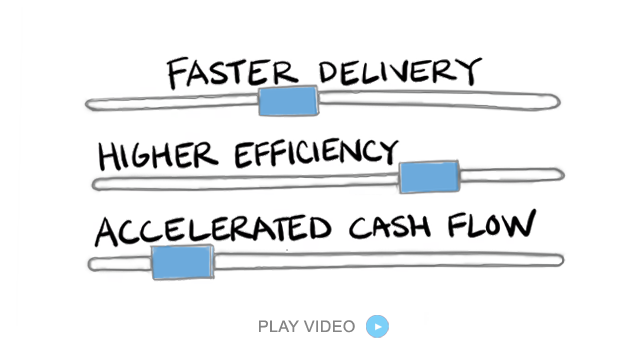Implementing Industrial IoT: Empowering Manufacturing IT Managers to Drive Efficiency and Integration
The Industrial Internet of Things (IIoT) has revolutionized the industrial manufacturing sector. It enables real-time connectivity, drives data-centric operations, and fosters agile decision-making. For Manufacturing IT Managers in industrial manufacturing facilities, IIoT presents an opportunity to transform operations by seamlessly integrating advanced technologies into existing ecosystems.
However, the journey to IIoT implementation can feel overwhelming. Ensuring smooth integration with systems like PlanetTogether, SAP, Oracle, Microsoft, Kinaxis, or Aveva requires strategic planning, technical foresight, and a clear value-driven approach.
This blog will guide Manufacturing IT Managers through the process of implementing IIoT while maximizing their existing technology investments.

The Role of IIoT in Industrial Manufacturing
IIoT connects equipment, machines, and systems across the shop floor, delivering actionable insights that drive operational excellence. From predictive maintenance to resource optimization, IIoT enables manufacturing facilities to achieve:
Enhanced Productivity: Machines report real-time performance, reducing downtime.
Cost Optimization: Precise data-driven decisions minimize material and energy waste.
Improved Visibility: Centralized dashboards offer a holistic view of the production process.
Flexibility and Scalability: IIoT systems grow with the plant's evolving needs.
To fully harness IIoT, integration with core systems such as ERP (e.g., SAP or Oracle), APS (e.g., PlanetTogether), and MES solutions is critical. Manufacturing IT Managers play a central role in connecting these technologies to ensure seamless data flow.

Key Challenges in IIoT Implementation
While the benefits of IIoT are substantial, its implementation comes with challenges that Manufacturing IT Managers must address:
Legacy System Compatibility: Many industrial plants rely on older machinery or siloed systems. Ensuring IIoT solutions work with these systems is vital.
Data Overload: IIoT generates vast amounts of data. Without proper analytics and filtering, it becomes overwhelming.
Cybersecurity Risks: More connectivity increases the risk of cyberattacks, demanding robust security measures.
Integration Complexity: Combining IIoT platforms with ERP (SAP/Oracle), APS (PlanetTogether), or cloud solutions (Microsoft Azure) requires specialized integration strategies.
As Manufacturing IT Managers navigate these challenges, their focus should remain on creating an integrated ecosystem where IIoT seamlessly interacts with production, planning, and scheduling systems.

Building an IIoT Implementation Strategy
A well-defined strategy ensures that the implementation of IIoT aligns with business goals and delivers tangible results. Here is a step-by-step framework tailored for industrial manufacturing facilities:
1. Define Objectives and Scope
Start with a clear understanding of why IIoT is needed. Examples of objectives include:
Reducing unplanned downtime through predictive maintenance.
Improving scheduling accuracy by integrating real-time data into APS systems like PlanetTogether.
Enhancing energy efficiency and resource utilization.
Ensure these objectives align with broader business goals, such as reducing costs or improving throughput.
2. Assess Existing Infrastructure
Conduct a comprehensive audit of current systems, including ERP (SAP/Oracle), MES, APS, and legacy equipment. Identify:
Compatibility issues with IIoT platforms.
Data silos that need integration.
Network and security vulnerabilities.
Platforms like PlanetTogether are ideal for integrating with IIoT data streams as they provide advanced production scheduling and optimization. With proper integration, IIoT sensors can feed real-time data into PlanetTogether, improving scheduling decisions.
3. Select the Right IIoT Solution
Choosing the right IIoT platform depends on:
Scalability: Can the platform adapt to plant growth?
Interoperability: Does it integrate with SAP, Oracle, or Microsoft ecosystems?
Advanced Analytics: Can it transform data into actionable insights?
Cloud-based IIoT platforms, such as Microsoft Azure IoT, offer scalable solutions that integrate with ERP and APS systems, enabling seamless data flow across the production environment.
4. Prioritize Integration with Existing Systems
IIoT’s value is amplified when it integrates with existing enterprise systems. For instance:
ERP Systems (SAP/Oracle): IIoT sensors can feed production data directly into SAP or Oracle ERP, improving inventory management and cost tracking.
APS Systems (PlanetTogether): Real-time machine performance data can optimize production schedules, ensuring on-time delivery and reduced downtime.
Cloud Platforms (Microsoft Azure): Cloud infrastructure can centralize IIoT data and facilitate advanced analytics.
Example: A manufacturing plant uses PlanetTogether integrated with SAP. IIoT-enabled machines send live performance data to PlanetTogether, allowing the system to adjust production schedules dynamically based on real-time insights.
5. Pilot and Scale Gradually
Start small by piloting IIoT solutions on specific processes or production lines. Monitor performance metrics such as:
Machine uptime
Energy savings
Reduced lead times
Once the pilot demonstrates value, scale the solution across the facility, ensuring integration with ERP, APS, and MES systems remains smooth.
6. Address Cybersecurity
IIoT increases the number of endpoints in your network, creating potential vulnerabilities. Mitigation strategies include:
End-to-end encryption for data.
Regular security audits.
Role-based access controls for IIoT platforms.
![]()

The Power of IIoT + PlanetTogether Integration
For Manufacturing IT Managers, integrating IIoT with PlanetTogether APS unlocks significant operational benefits. PlanetTogether optimizes production scheduling and capacity planning, and when combined with IIoT data, it enables:
Real-Time Scheduling: IIoT sensors report machine availability, performance, and maintenance needs. PlanetTogether adjusts schedules dynamically based on this input, minimizing disruptions.
Improved Resource Allocation: Accurate IIoT data allows PlanetTogether to optimize labor, materials, and equipment utilization.
Predictive Maintenance: IIoT-enabled predictive maintenance reduces unplanned downtime. PlanetTogether uses this data to reschedule production seamlessly.
Case in Point
Imagine an industrial manufacturing plant where IIoT sensors detect a pending breakdown in a critical machine. The sensor alerts the system, triggering predictive maintenance. Integrated with PlanetTogether, the APS automatically reschedules production to other machines, ensuring zero delays.
When IIoT and PlanetTogether integrate with ERP systems like SAP or Oracle, the benefits extend further:
Improved inventory management based on real-time production data.
Faster decision-making with unified data visibility.
Enhanced cost optimization through precise resource planning.
As a Manufacturing IT Manager, your role in implementing IIoT is pivotal. By connecting IIoT solutions with systems like PlanetTogether, SAP, Microsoft Azure, and Oracle, you can unlock unprecedented levels of efficiency, visibility, and agility.
The key to success lies in:
Defining clear objectives for IIoT.
Ensuring integration across ERP, APS, and MES systems.
Prioritizing cybersecurity and scalability.
Starting small and scaling strategically.
PlanetTogether’s ability to synchronize with IIoT platforms ensures that production scheduling is always aligned with real-time machine performance data. For industrial manufacturing facilities, this translates to reduced costs, enhanced productivity, and competitive advantage.
Are you ready to take your manufacturing operations to the next level? Contact us today to learn more about how PlanetTogether can help you achieve your goals and drive success in your industry.
Topics: Industrial Manufacturing, PlanetTogether Software, Real-Time Scheduling, Integrating PlanetTogether, Cost Optimization:, Flexibility and Scalability, Improved Visibility, Enhanced Productivity





















LEAVE A COMMENT